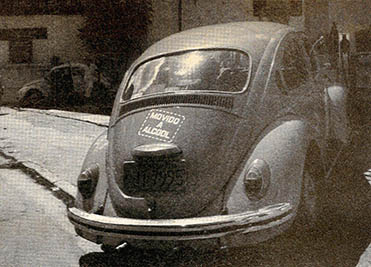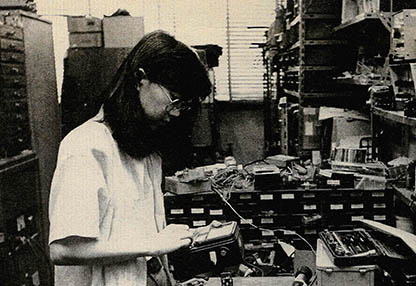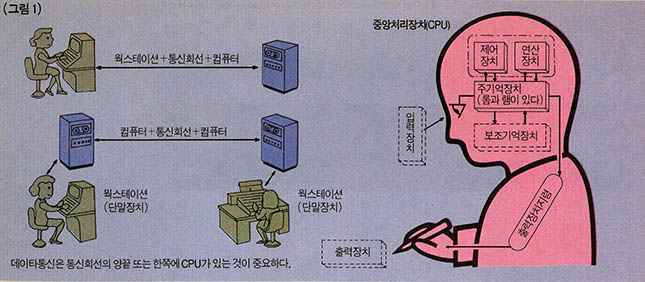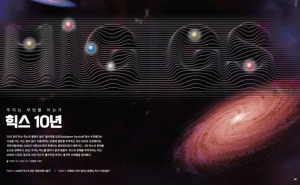흔히 기술은 응용과학과 공학을 다루는 지식의 한 분야라고 정의된다. 간단히 말해서 기술은 과학을 현실에 응용하는 공학적 방법이다. 기술에 대한 엄청난 덩치의 백과사전 조차 등장할 정도다.
기술에 관한 책 중에 일부는 경고를 보내고 있다. 뉴욕대학 커뮤니케이션 학과에 있는 네일 포스트맨은 '기술독점 : 기술에 항복한 문화'라는 제목의 책을 펴냈다. 이 책에서 그는 현재의 기술의 수는 예전보다 훨씬 많을뿐 아니라 그 변화 속도도 가속화되고 있다고 말하면서 요즘의 '기술 유행병'에 대해 경고한다.
오늘날 빠르게 변화하는 엄청난 양의 기술을 따라잡기란 일반인뿐 아니라 과학자들에게 조차 대단히 어려운 일이다. 컴퓨터 때문에 정보의 과잉공급 현상이 생겨났다(정보를 보다 현명하게 선택하게 해주는 더 나은 컴퓨터 검색시스템이 필요하다). 한편 최신 기술을 애써 추적하고 있는 사람은 아무리 빨리 뛰어도 항상 제자리에 다시 돌아오는 앨리스와 같은 기분을 느끼게 될 것이다. 기술 유행병 때문에 우리는 각 기술이 현재와 미래에 미칠지 모를 영향에 대하여 신중하게 생각하지 못하게 된다.
좋다. 그러나 그렇다고 해서 우리 모두가 오염물질이 해안으로 밀려오지도 않고 대기 속으로 퍼지지도 않는 멋진 남양의 섬나라로 탈출할 수는 없다. 지구는 하나뿐이며 기술은 전 지구적인 영향을 미치므로 기술의 이러한 문제를 직시해야만 한다.
결국 현재의 기술 중에서 사람에게 재미있고 실질적으로 이득이 되는 기술만 엄격하게 골라서 발달시키는 것이 보다 안전한길이 될 것이다.
지구의 원유와 가스는 고갈되지 않을까? 무공해 핵융합기술의 발명은 아직도 멀었는가? 태양에너지는 깨끗하고 무한하게는 보이지만 거의 사용되지 않는다. 최근뉴스에 의하면 '첨단 광전지 시스템'이라는 회사는 포켓용 계산기에 쓰이는 형태의 광전지판을 모아 5에이커 넓이에 이르는 태양에너지 집열판을 만들었다고 한다(필자도 전지를 갈아 끼우지 않고서도 완벽히 작동하는 계산기를 가지고 있다). 그 집열판은 이전의 태양에너지 시스템보다 싼 값으로 전기를 만들어 낸다고 한다.
에너지가 충분하고 또 그것이 생태계를 파괴하지 않는다면 사람들은 삶을 더 풍요롭게 하고 수명을 연장하는 일에 관심을 쏟을 것이다. 수명연장과 관련된 일 중에는 결함이 있는 심장 판막과 같이 병들고 손상된 신체 조직을 교체하는 작업이 있다. 냉동된 신체기관이 바로 그러한 일에 쓰이는데, 그 일도 쉽지만은 않다. 최근 미국의 크라이오라이프(Cryolife)사는 신체 기관을 보다 효과적으로 냉동시키는 방법을 개발했다. 혈관이나 판막과 같은 조직을 먼저 체온과 같은 온도의 영양액에 6시간 동안 담그는 방법을 통하여 영양을 공급한 뒤에 얼리는 것이다. 결국은 인체의 모든 기관을 별 문제없이 얼릴 수 있는 기술이 개발되리라 기대된다.
인간 거주지의 보전에 대하여 생각해보자. 소화기는 필요하긴 하지만 항상 잘 동작되는 것이 아니며 때로는 흘러나온 소화용액 때문에 가구들을 망치기도 한다. 그런데 최근 이스라엘 벤구리온 대학의 연구에 기초한 새 소화기가 개발되었다. 그 소화기는 '전기바람'을 이용하는데, 이 전기바람은 뾰족한 전극과 편편한 전극이 만든 전자기장 속에서 뾰족한 전극이 원자를 쪼갤 때 발생된다. 이렇게 형성된 이온입자는 충돌하여 중성 원자 쪽으로 방향을 잡는데 이 때 바람이 일어난다. 이 바람은 깔개나 난로 위와 같이 평평한 표면에 일어난 불을 아무런 손상없이 끄기에 적당할 것이다.
오늘날 생태학에서 제기되는 가장 예민한 문제 중 하나는 바로 쓰레기처리. 물을 담는 용기에 지금도 쓰이고 있는 방수용 도료가 이미 기원전 4세기 이전의 그리이스인들에게서 개발되었다는 사실이 최근에 알려져 흥미를 끈다. 이와 비슷한 물질이 합성된다면 핵폐기물을 담아둘 용기의 무결성을 유지시킬 수 있을 것이다.
요즘 폐기물변환시스템사에서 특허를 낸 '바이오매스' 소각기는 헌 타이어나 신문지와 같은 쓰레기를 처리할 뿐만 아니라 그것을 대체 연료자원으로 바꾸는 일도 한다. 그 소각기는 높은 온도(화씨 1.800°-2.800°)에서 작동되지만, 쓰레기 연소 중에 생긴 열을 다시 이용하므로 적은 양의 외부 에너지만으로도 시동이 가능하다.
시카고 근교에 있는 알곤 연구소에서 개발한 '바이오락'기술을 이용하면 음식 찌꺼기는 생물분해되는 플라스틱 필름이나 코팅재질로 바뀌어진다. 이 플라스틱의 기본은 젖산인데, 햇빛이나 물에 닿으면 무해하게 분해된다. 이 플라스틱을 만드는 일에는 식품처리 산업에서 버려지는 토마토와 치즈 찌꺼기가 사용되기 때문에 쓰레기처리에도 도움이 될 것이다.
알곤 연구소는 폐자동차를 잘라 고철(연간 1천만에서 1천2백만t)로 만들 때 생기는 쓰레기를 이용하는 방법에 관해서도 연구 중이다. 고철 1t당 5백파운드의 비금속성 잔여물이 수거되는데 이렇게 모은 섬유, 유리, 쓰레기 그리고 자동차에 쓰이는 여러 종류의 용액으로부터 열수지가 분리되어 나온다. 이 열수지는 잔여물들로부터 재구성되고 다시 사용된다.
새로운 기술의 예로 필자가 즐겨 드는 것이 베를린에 사는 페인트 업자 베른트 노이만씨의 상품에 관한 것이다. 그는 '여러 가지 물질'을 섞어서 향기는 나지만 '환경에는 별 해가 없는' 데콘타미놀이라는 끈끈이액을 만들었다. 이 액은 벽에 쓰인 낙서를 쉽고 안전하게 지워준다.
문명은 진보하고 있다!

Technology Update
Technology is usually defined as a branch of knowledge dealing with applied science and engineering. To oversimplify it, technology is the way engineering carries out the practical applications of science. There are even huge new encyclopedias of technology!
Other books on technology raise alarms. Neil Postman, of New York University's department of communication arts and sciences, has written one called Technopoly: The Surrender of Culture to Technology.' He warns against the 'technology epidemic,' saying that not only is there much more technology now than ever before, but the rate of change in technology is more rapid than ever.
The tremendous, rapidly changing technology of today makes it very hard for anyone, even a scientist, to keep up to date. Computers have made the information glut worse(better and more wisely selective computer information retrieval is needed). In the meantime, those who try to keep up tend to feel a little like Alice, running very hard with the Red Queen just to stay in one place. The technology epidemic also makes it hard to think wisely about the effects this technology is having now, and will have in the future.
OK. But we can't escape to a nice South Sea island — not with pollution lapping the shores and diffusing through the air. The planet is ONE, and we have to face up to the problems of our technology as they affect the entire Earth.
With this preamble, it seems safe to launch into an update on current technological advance that is strictly limited to the cheerfully positive.
The world's oil and gas will run out? Clean nuclear fusion not yet invented? Solar energy is clean and endless, although seldom used. Now comes the news that Advanced Photovoltaic Systems, Inc., has built a five-acre solar-energy collecting array made of a type of photovoltaic cell found in pocket calculators(I have such a calculator, and it works perfectly, with no batteries to replace). The array will produce electricity that is cheaper than previous solar energy systems have managed.
With plenty of energy, and the kind that doesn't destroy our ecology, humanity could turn its attention to the betterment and prolongation of life. Some aspects of life extension involve replacements of diseased or defective body tissues like faulty heart valves. Frozen parts are the thing, but that's always been difficult. Now the U.S. company Cryolife, Inc., of Marietta, Ga., has devised a method of freezing that works better. First they feed the tissue(like a vein, or a heart valve) by putting it in a nutrient solution at body temperature for six hours; then they freeze it. It's hoped that eventually technology will permit problem-free freezing of whole organs.
On to the preservation of human dwelling places. Fire extinguishers are desirable, but they don't always work well and they can gunk up, even damage possessions. Recently a fire extinguisher was developed based on research done at Be-Gurion University in Israel. It uses 'electric wind,' which occurs when a sharp and a flat electrode creates a field in which the sharp electrode breaks atoms apart. The resulting ions collide and set up motion in neutral atoms, creating the electric wind, which seems to be good for putting out fires on flat surfaces like rugs, stove tops, etc., without harming anything.
One of the most sensitive issues in ecology today is waste disposal. It is almost amusing to learn that recently it's been found that prior to the 4th Century B.C. the Greeks devised a waterproof plaster that still works to make a container hold water.
It may be possible to synthesize something like this to preserve the integrity of containers for nuclear waste products.
Efforts are now being made convert waste into useful energy or products. Waste Conversion Systems Inc., in Englewood, Colo., has patented a 'biomass' burner that not only disposes of old tires, newspapers, and the like, but it turns them into an alternative fuel source. The burner operates at high temperatures(1,800 to 2,800 degrees Fahrenheit), but needs only a small start with external energy, for it also uses the heat produced by the garbage it's burning.
Food waste can be converted into biodegradable plastic films and coatings by means of a 'Biolac' process developed by Argonne National Laboratory, near Chicago. The plastic is lactic-a-cid-based, which means that if it's exposed to sunlight or water it will decompose harmlessly. Making the plastic will also help dispose of waste because it will use up the potato waste and cheese whey thrown out by food processing industries.
Argonne Laboratory has also come up with a way to use what's left over when automobiles are shredded to make iron scrap(10 to 12 million tons per year). Of the 500 pounds of non-metallic residue remaining after each ton of steel is recovered, the thermoplastics can now be dissolved away from the fiber, glass, dirt and various car fluids. The thermoplastics are then recovered from the residue, and used again
My favorite example of new technology is the news item about a Berlin painting contractor named Bernd Neumann, Who found a way of mixing 'different substances' to make an odorous but 'environmentally friendly' goo called Dekontaminol that safely and easily removes graffiti from walls.
Civilization marches on!

















